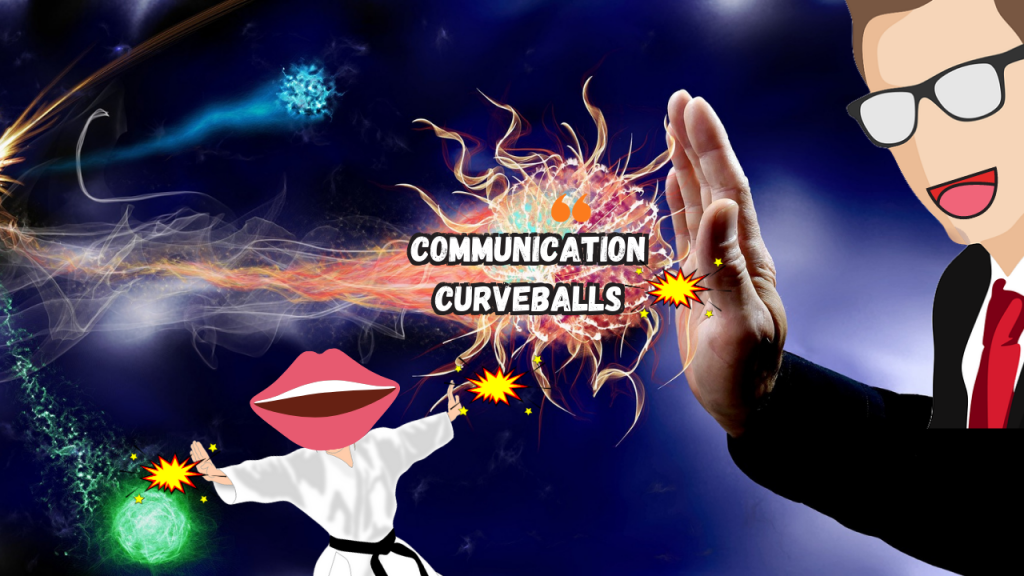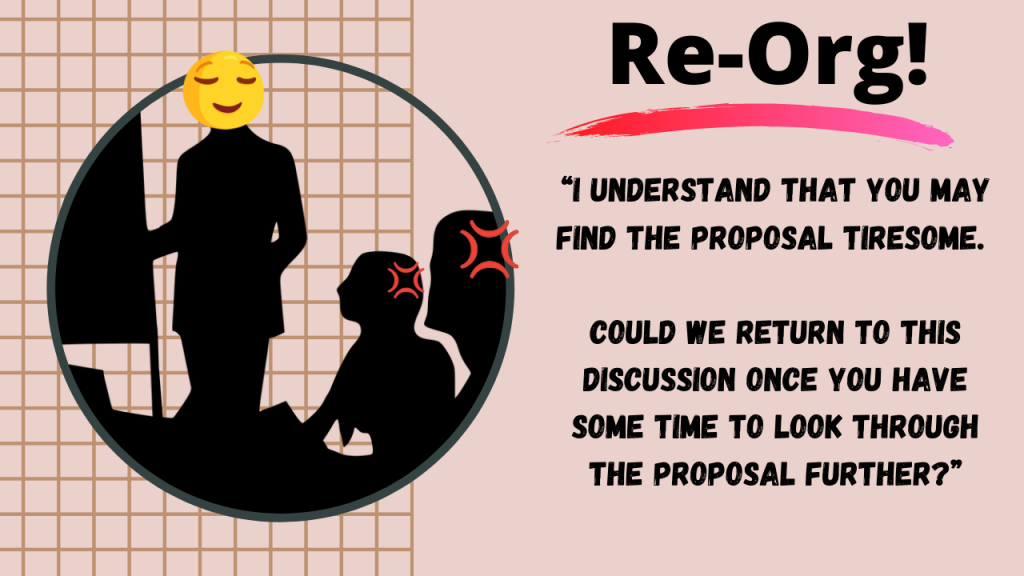Deflect & Redirect! How to Deal with Tough, Challenging, or Odd Communication Scenarios

Most, if not, all of us would have encountered that awkward, challenging, or odd conversation (shoutout to the sales staff in our audience!). What if we tell you that public speaking/communication skills can also be used to manage such situations? Of course, we are not referring to your traditional speaking skills for the stage. Instead, communication skills (both in terms of content ideation and delivery) are equally applicable to such difficult communication scenarios.
But what are these scenarios? Picture a meeting or a presentation at your workplace. You have just prepared the presentation of your life – complete with statistics, beautiful language, and dynamic slides (from your perspective, at least!). As you call out for feedback, you hear someone commenting out loud: “I find your presentation … boring.” Before you can even respond, you start to feel the slow, burning emotion from the depths of your stomach – anger. How do we manage such volatile situations?
We have shared extensively about communication skills for conflict management – today, let us share 3 quick steps on how you can control the conversation flow to your advantage.
Step #1: Unpack – Throw the Ball Back!
The common mistake to make in such a communication scenario is to entrench yourself further in this uncomfortable situation. Using the example in our introduction, the attention is on you right from the outset! You think to yourself: “Everyone is now waiting for how I can respond to this question.” Instead, try to return the ball back to the other party and reframe the communication setting into a discussion.
Your aim is not to avoid the tough question or situation, but to analyse so that you can respond with accuracy. Instead of reacting to broad statements (e.g., “you were boring!”), focus on asking the “Why” question to allow the other party room to explain their position. In our same example above, try responding with an open-ended question, such as: “I am sorry you feel that way. May I clarify what you mean by “boring”?” An open-ended question like this is an invitation for the other party to clarify and engage in a discussion (instead of an attack!).

Step #2: Walk the High Road & Find the Treasure
It is tempting to react to the emotive aspect of the question and defend yourself. When faced with such a situation, you may think it easy to stand firm on your position or disregard the entire comment. This fixation on a “winning” mentality is an unhealthy competitive element. To us, backing down or adopting a more deferring/calmer tone is a sign of defeat and relinquishing our position to the other party. As you may guess by now, the best way is less complex.
As difficult as it may be, try to listen for the nuggets of information that you may glean, even from a broad, sweeping statement. An emotive statement, especially, may be motivated by an underlying tension or concern that the other party has not set out. Affording them that ‘ranting’ space may be a strong foundation to build a shared solution. In our scenario, the “boring” comment may have stemmed from other contextual factors (e.g., tired at work, having to sit through a series of presentation). Being able to tease those elements out and acknowledging them for the other party allows you to engage the other side with empathy. Instead of clouding yourself with the chaos of emotive response, aim for a fruitful discussion with the other side.

Step #3: Know Your Limits – Strategise & Return Stronger
One caveat we would add to our recommendations above is to always understand your limit. Being able to listen to the other side and exercise empathy does not equate to having to blindly accept abusive or offensive conduct. Instead, when you can set out the limits or threshold for your communication settings, you will draw confidence in the ability to calmly move to a safer and more constructive environment.
How can we ‘retreat’ and still ‘win’ then? Disengaging yourself from a difficult communication scenario may be more challenging than it first appears. It is not about ‘running away’; it is about setting a clear boundary for the other party to respect. Remember to set your reason for disengaging clear, with a calm, professional tone (e.g., “I apologise but shall we pause this discussion and return to it when you are ready to discuss calmly or professionally”). You can even combine this with your listening ear and acknowledge specific concerns to support your cause (e.g., “I understand that you may find the proposal tiresome. Could we return to this discussion once you have some time to look through the proposal further?”).

Final Thought:
Stand Firm & Professional
It is not easy taking the high road and managing difficult situations calmly and professionally. It is even tougher when the other side is stubbornly refusing to engage you, even on a communication level. All things considered, remember to stand your ground firmly and professionally, with an eye on empathy for the other party. We hope that with the quick tips above, you too can manage those difficult communication scenarios that you may encounter!
This might be helpful too – WATCH our video on “How To Say “No” or “I Don’t Know” WITHOUT Offending Anyone!”
By The Way…
If you’re keen to take your public speaking skills & presentation skills (either business/corporate presentation / training for presentation to clients / kids in-class presentation) to the next level so that you may communicate and deliver speeches with greater flair and charisma, feel free to check out our public speaking courses for adults and kids below!
For more about our Public Speaking Courses for Adults :
https://publicspeakingacademy.com.sg/courses-and-programs/group-classes-for-adults/
If you’re also looking for Public Speaking Course for Kids / Children:
https://publicspeakingacademy.com.sg/group-classes-students-age-9-18/

Leave a Reply